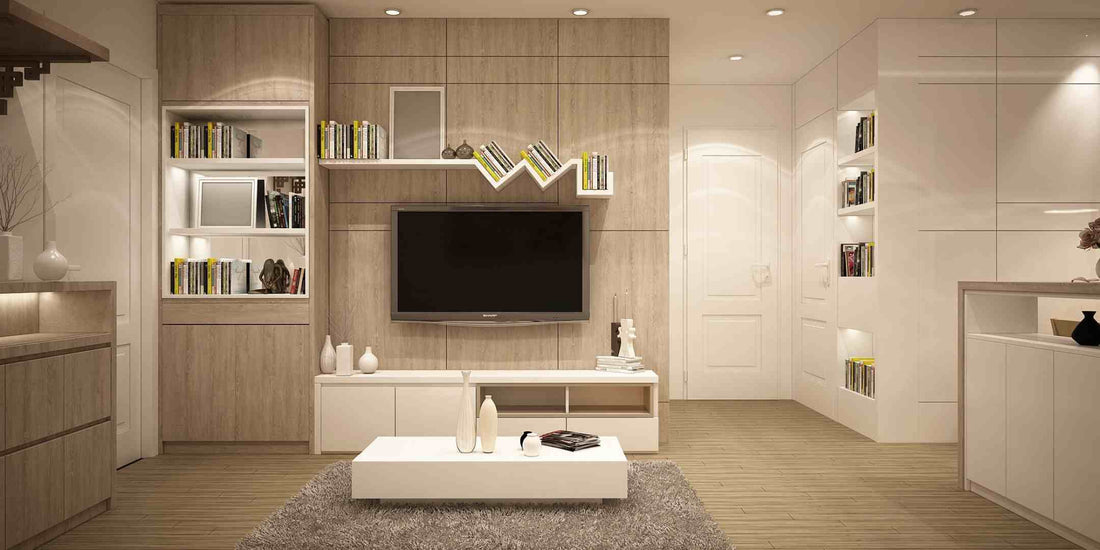
Smart Storage Solutions for Small Homes
Share
Creating a cozy, clutter-free home in a compact space is easier said than done, but not impossible. With the rise of smart storage solutions, even the tiniest homes can feel spacious, functional, and, dare we say, stylish. Let’s talk built-ins, modular furniture, clever shelving, and all the design tricks the pros swear by.
What is a Smart Storage System?
What do we mean by an innovative storage system? At its core, smart storage is about maximizing its uses without compromising style.

Interior designer Carla Santiago says, "A smart storage system isn't just about putting things away; it's about creating a home that flows with your life."
In short, what is the purpose of the storage system? To make your life easier, of course. It helps you have a proper organization system, cuts and maintains visual clutter, and transforms your home into a breathable space. Think of it as minimalist living meets practical design.
1. Vertical = Vital
Wall-mounted shelves, tall bookcases, and hanging organizers use that often-neglected wall space. They're perfect for storage ideas for homes that don’t involve taking up precious floor space.

Use the space above door frames and windows for floating shelves. It’s a game-changer for studio apartments.
2. Furniture That Works Overtime
Ottomans with hidden compartments, beds with drawers underneath, and benches that open up to reveal storage are the heroes of smart storage solutions DIY, because who has the room for single-function furniture?

Look for coffee tables with lift tops or side tables that double as file organizers. Search terms like "dual-purpose furniture," "under-bed storage bins," and "storage-friendly seating" are your best friends.
3. Slide, Fold, Hide: Transformative Fixtures

Pocket doors, fold-down desks, and retractable tables are space-saving tools popular in modern home storage design. They create the illusion of more room while giving you options.
4. Hooks, Rails, and Pegboards—Oh My!
Sometimes, the answer is right in front of you. A row of hooks behind the door can hold coats, bags, and even hats. A pegboard in the kitchen? Genius. You can hang pans, utensils, and even a spice rack.

Julia Panero, storage strategist, says, "Hooks and rails are the underdogs of storage—they adapt to your needs without costing a fortune."
5. Zone Your Spaces
Zoning helps make areas feel distinct without walls, especially in open-plan homes.

Use rugs, open shelving, or room dividers with cubbies to separate your living room from your work-from-home setup.
6. Think Like a Minimalist
Decluttering isn't just trendy, as it’s necessary for small homes.

A solid, smart storage solution starts with letting go of what you don’t need. The fewer items you have, the more space you reclaim.
7. Hidden Storage Just In Plain Sight
That awkward gap under your stairs? They are perfect for drawers or built-in cabinets.

The empty corners? Add floating shelves or corner desks. Even radiators can be covered with shelves.
8. Over-the-Door Everything
Over-the-door organizers can be used in bathrooms (to hold toiletries), closets (for shoes), or kitchens (for pantry goods).

They’re practical, affordable, and require zero drilling.
9. Under the Sink Upgrades
Your kitchen or bathroom, as well as under-sink spaces, can be notorious for being chaotic.

Use stackable drawers, tiered shelves, and sliding baskets.
10. Customize When You Can
Custom cabinetry may be pricier, but it allows for floor-to-ceiling utility.

It also opens doors (pun intended) to optimized shelving, pull-out drawers, and built-ins that feel part of the architecture.
Quick Storage Wins
- Use baskets for open shelving.
- Label Everything in a pantry.
- Add a magnetic strip inside cabinets for knives or tools.
- Use risers in closets to create double the space.
- Turn your headboard into shelving.
Smart Storage is Smart Living
So, what is the purpose of the storage system again? It’s to make your space and life run smoother. Smart storage solutions don’t mean you need to spend a fortune. With some planning, creativity, and much functional thinking, even the smallest homes can feel like spacious sanctuaries.
Ultimately, it’s all about making your space work harder so you don’t have to.
